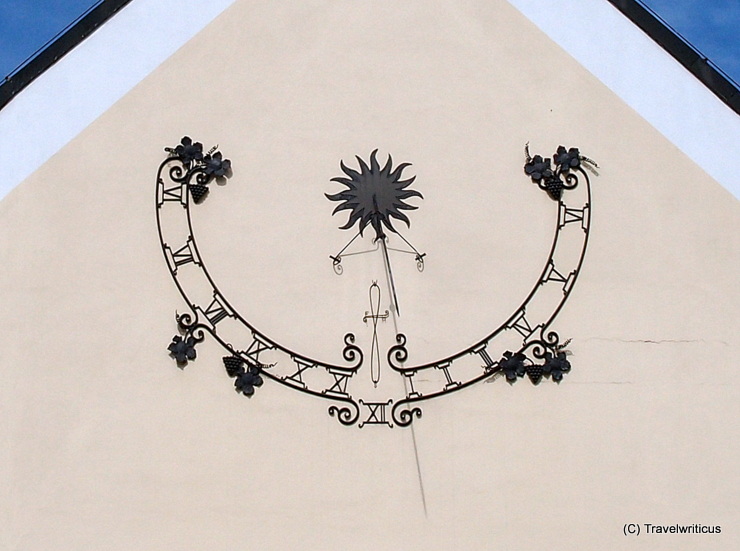
Sundial with grapes in Poysdorf. The grapes refer to the fact that Poysdorf is famous for its vineyards surrounding the place.
You only see what you know (Goethe)

Sundial with grapes in Poysdorf. The grapes refer to the fact that Poysdorf is famous for its vineyards surrounding the place.
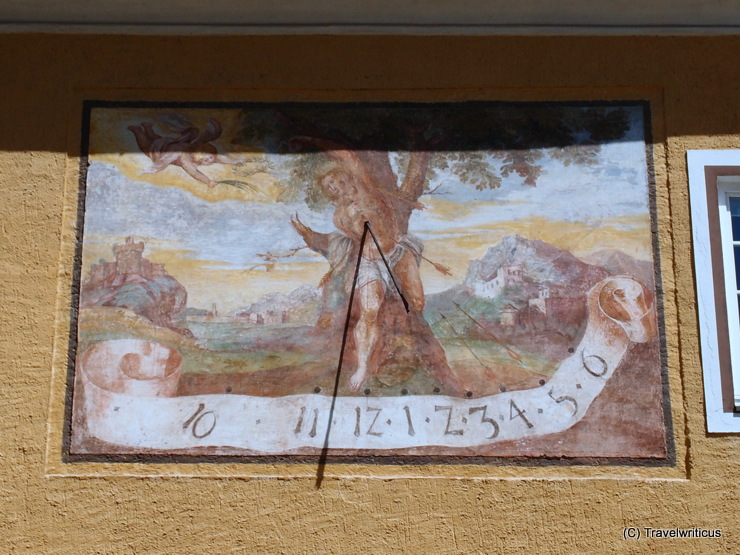
Sundial displaying the martyrium of Saint Sebastian seen at the inner court of Millstatt Abbey.
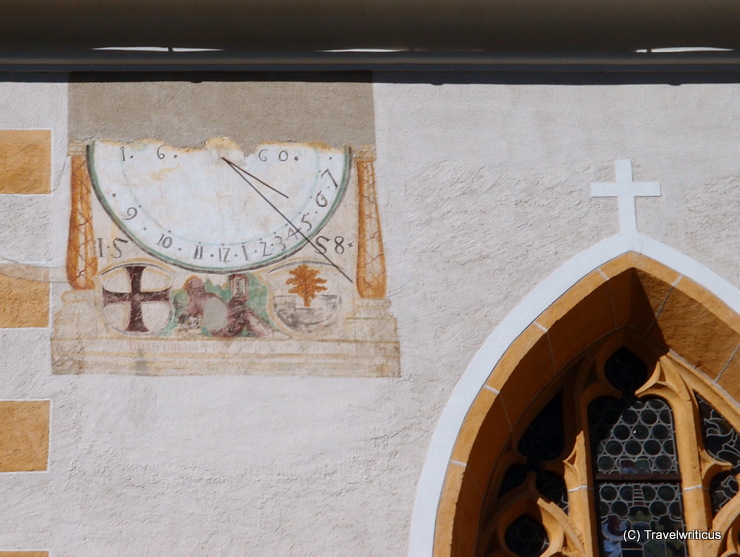
Sundial seen at the Romanesque cloister courtyard of the former Millstatt Abbey in the Austrian state of Carinthia.
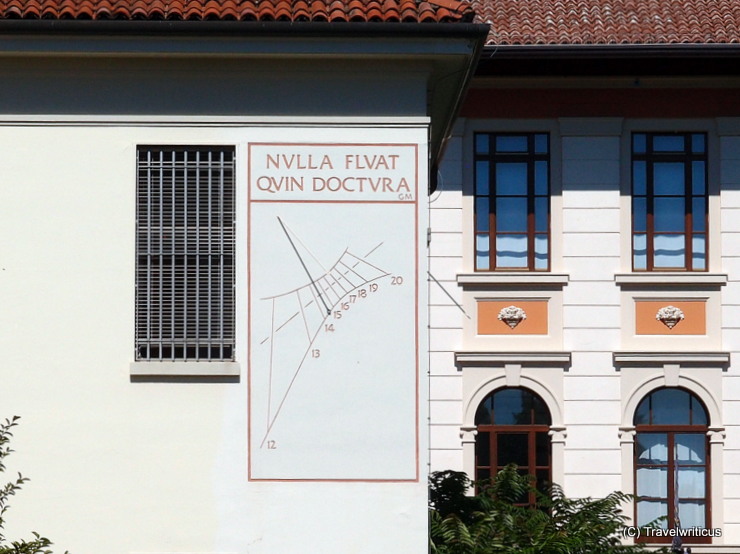
On my urban walk through Udine I come across this sundial. I like the modern style. Unfortunately I don’t know the meaning of Nulla Fluat Quin Doctura. It sounds like you should teach them, there is no flow. Which flow?
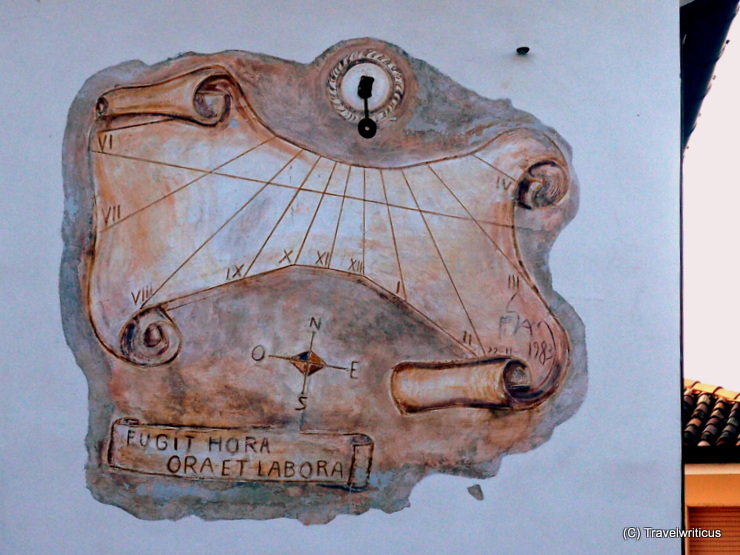
Sundial seen at the walls of Cathedral of San Michele Arcangelo in San Daniele del Friuli. This place is best known as the production center of the San Daniele prosciutto.
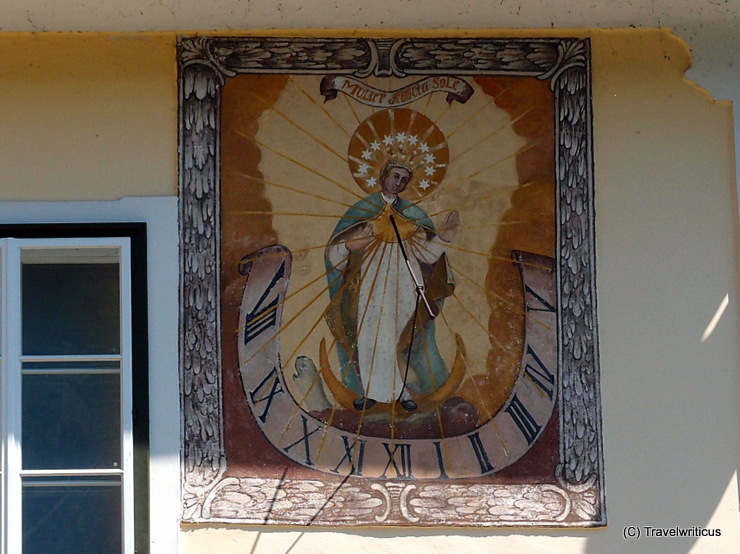
Sundial seen at the walls of Museum Hallstatt located in Hallstatt, a world heritage site in Austria. The museum presents the 2nd largest collection of pieces related to the Iron Age Hallstatt culture in Austria.
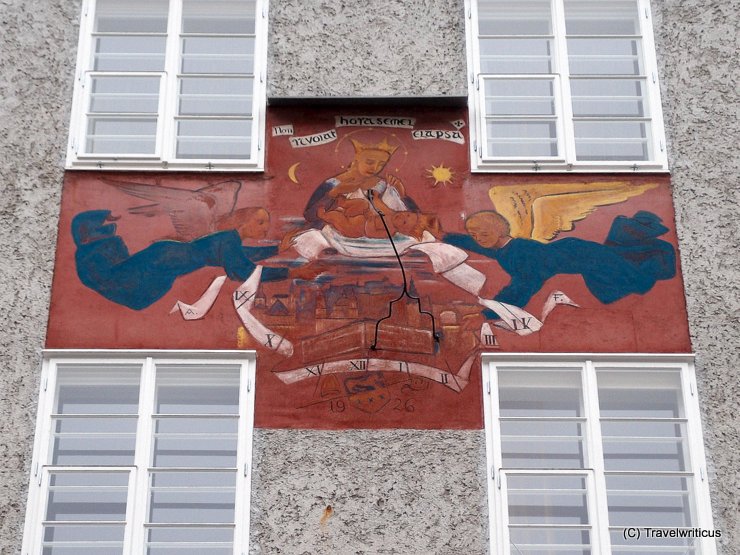
Sundial in one of the inner yards of St Peter’s Arch Abbey (Erzabtei St. Peter) in Salzburg. The Benedictine monastery in the Austrian city of Salzburg was founded in 696 and is considered one of the oldest monasteries in the German-speaking area.
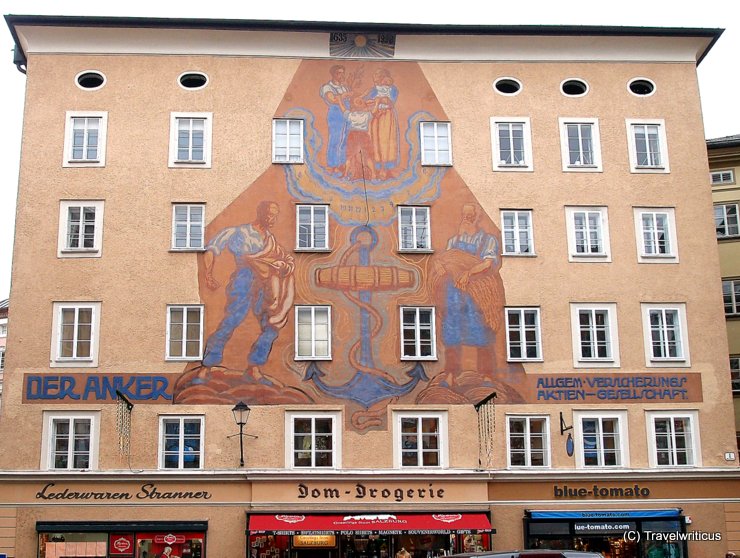
Huge sundial seen at the Ankerhaus in the city of Salzburg. The house is named after the insurence company DER ANKER (engl. the anchor). In earlier times the building housed the hotel ‘Erzherzog Karl’ where famous persons like the Austrian Empress Elisabeth of Austria (‘Sisi’) or the German Minister President Otto von Bismarck used to stay.
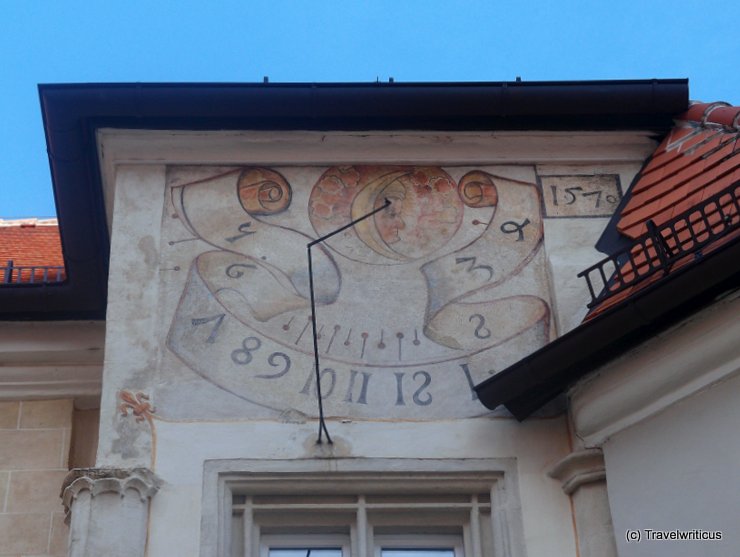
Visitors find this sundial, dating back to 1570, at St Leopold’s Courtyard (Leopoldihof) of Klosterneuburg Abbey (Stift Klosterneuburg).
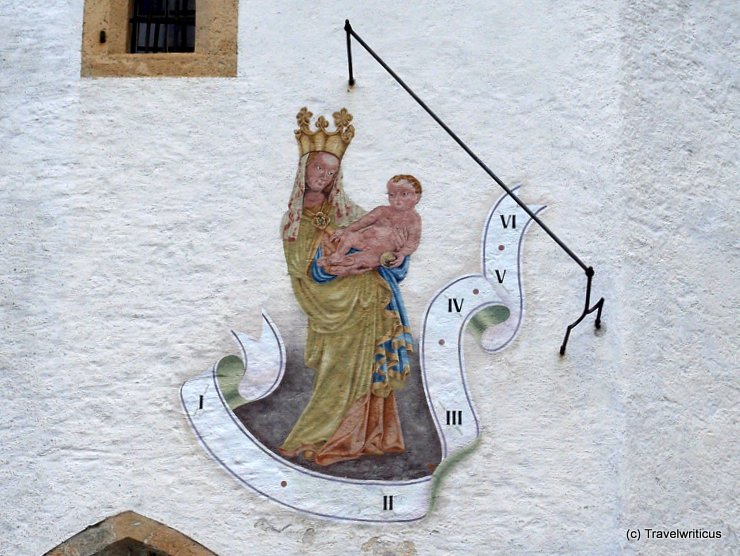
Sundial admirers find this piece on the facade of the Dechantskirche in Altenmarkt. The figure represents a Madonna for which the church is famous. You can see a copy of this statue at one of the side altars in the church.
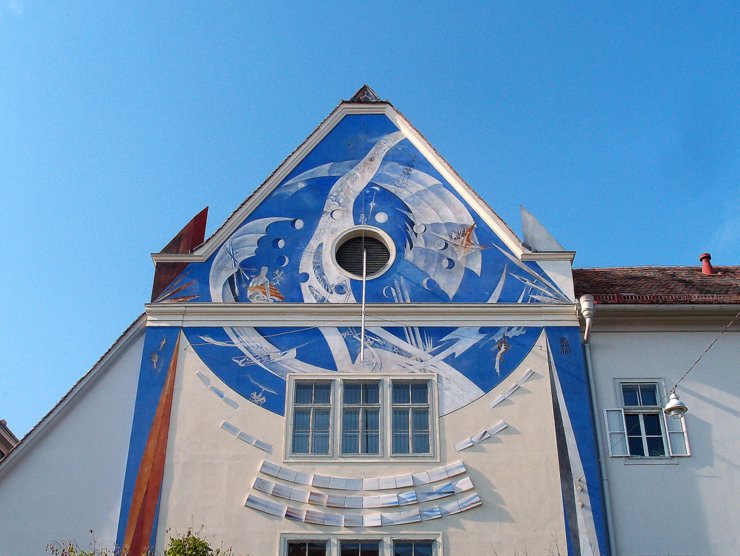
This sundial created by Wolfgang Buchner is situated at the Styrian state archive in Graz. The state archive is located at the Karmeliterplatz, a plaza in the centre of the city.
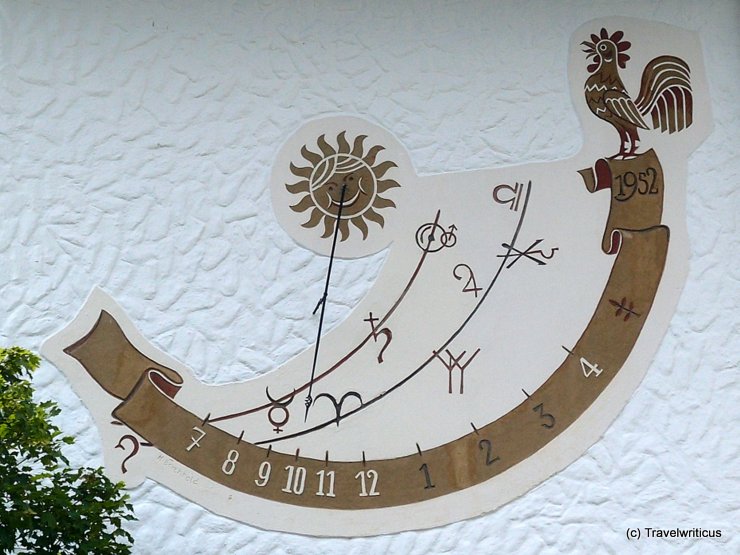
This sundial decorates a school facade in the Austrian village of Mittelberg. It is dated to the year 1952. Visitors find Mittelberg in the Kleinwalsertal. Even though this valley is part of Austria, you can only reach it by road from Germany.